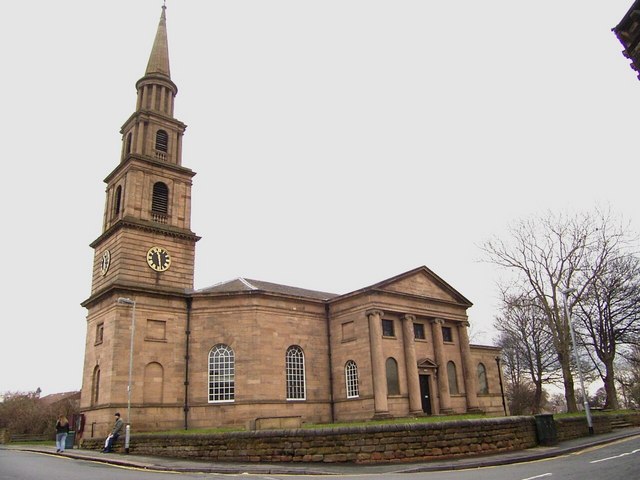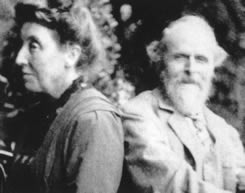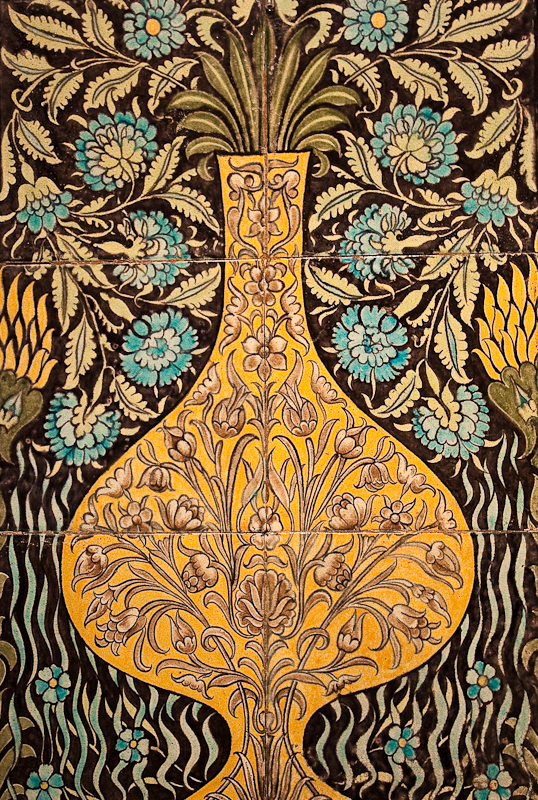|
Cannon Hall (Barnsley)
Cannon Hall is a country house museum located between the villages of Cawthorne and High Hoyland some 5 miles (8 km) west of Barnsley, South Yorkshire, England. Originally the home of the Spencer and later the Spencer-Stanhope family, it now houses collections of fine furniture, paintings, ceramics and glassware. It at one time housed the Regimental museum, Regimental Museum of the 13th/18th Royal Hussars (Queen Mary's Own) and the Light Dragoons, which has now closed. Now occupying four rooms in the east wing is the "Family of Artists" exhibition on loan from the De Morgan Foundation, which draws on the links between the Spencer Stanhopes and the De Morgans. The building is constructed of coursed sandstone with ashlar dressings with a symmetrical layout of a central 3-storey block of 5 bays and slightly set back 2-storey side wings of 3 bays. History Although there was a house on the site when the Domesday Book, Domesday Survey of 1086 was conducted, Cannon Hall picked ... [...More Info...] [...Related Items...] OR: [Wikipedia] [Google] [Baidu] |
John Carr (architect)
John Carr (1723 – 22 February 1807) was an English architect. He is best known for Buxton Crescent in Derbyshire and Harewood House in West Yorkshire. Much of his work was in the Palladian style. In his day he was considered to be the leading architect in the north of England. Life He was born in 1723 in Horbury near Wakefield, West Riding of Yorkshire, the eldest of nine children and the son of a master stonemason, mason, under whom he trained. He started an independent career in 1748 and continued until shortly before his death. John Carr was Lord Mayor of York in 1770 and again in 1785. Towards the end of his life Carr purchased an estate at Askham Richard, near York, to which he retired. On 22 February 1807 he died at Askham Hall. He was buried in St Peter and St Leonard's Church, Horbury, which he had designed and paid for. Career Carr decided to remain in Yorkshire rather than move to London because he calculated that there was ample patronage and the wealth to sustain ... [...More Info...] [...Related Items...] OR: [Wikipedia] [Google] [Baidu] |
Listed Buildings In Cawthorne
Cawthorne is a civil parish in the metropolitan borough of Barnsley, South Yorkshire, England. The parish contains 80 Listed building#England and Wales, listed buildings that are recorded in the National Heritage List for England. Of these, three are listed at Grade II*, the middle of the three grades, and the others are at Grade II, the lowest grade. The parish contains the village of Cawthorne and the surrounding countryside. In the parish is the English country house, country house of Cannon Hall, and its grounds, Cannon Hall Park. The hall is listed, together with associated buildings and structures in the park. Most of the other listed buildings are houses, cottages, and associated structures, farmhouses and farm buildings. The other listed buildings include a church and items in the churchyard, particularly grave slabs, bridges, a former corn mill, a former toll house, a guide post and milestones, drinking fountains, sculpted panels in a wall, a well, and a ... [...More Info...] [...Related Items...] OR: [Wikipedia] [Google] [Baidu] |
Grade II* Listed Buildings In South Yorkshire
There are over 20,000 Grade II* listed buildings in England. This list includes those in South Yorkshire. Barnsley Doncaster Rotherham Sheffield Notes External links {{DEFAULTSORT:Grade II Listed Buildings In South Yorkshire South Yorkshire South Yorkshire is a Ceremonial counties of England, ceremonial county in the Yorkshire and the Humber region of England. It borders North Yorkshire and West Yorkshire to the north, the East Riding of Yorkshire to the north-east, Lincolnshire ... Lists of listed buildings in South Yorkshire ... [...More Info...] [...Related Items...] OR: [Wikipedia] [Google] [Baidu] |
Evelyn De Morgan
Evelyn De Morgan (30 August 1855 – 2 May 1919) was an English painter associated early in her career with the later phase of the Pre-Raphaelite Movement, and working in a range of styles including Aestheticism and Symbolism. Her paintings are figural, foregrounding the female body through the use of spiritual, mythological, and allegorical themes. They rely on a range of metaphors (such as light and darkness, transformation, and bondage) to express what several scholars have identified as spiritualist and feminist content. Her later works also dealt with the themes of war from a pacifist perspective, engaging with conflicts such as the Second Boer War and World War I. Early life She was born Mary Evelyn Pickering at 6 Grosvenor Street in London, England, to Percival Pickering QC, the Recorder of Pontefract, and Anna Maria Wilhelmina Spencer Stanhope, daughter of John Spencer Stanhope and grand daughter of Thomas Coke, 1st Earl of Leicester. She was the eldest of four chi ... [...More Info...] [...Related Items...] OR: [Wikipedia] [Google] [Baidu] |
William De Morgan
William Frend De Morgan (16 November 1839 – 15 January 1917) was an English potter, tile designer and novelist. A lifelong friend of William Morris, he designed tiles, stained glass and furniture for Morris & Co. from 1863 to 1872. His tiles often recall medieval or Islamic design patterns. He applied innovative glazes and firing techniques. Galleons and fish were common motifs, as were "fantastical" birds and animals. Many of De Morgan's tiles were designed to create intricate patterns when several were laid together. Life and work Born in Gower Street, London, the son of the distinguished mathematician Augustus De Morgan and his highly educated wife Sophia Elizabeth Frend, De Morgan was supported in his desire to become an artist. At the age of twenty, he entered the Royal Academy schools, but he was swiftly disillusioned with the establishment. Then he met Morris and through him the Pre-Raphaelite circle. Soon De Morgan began experimenting with stained glass, ventured ... [...More Info...] [...Related Items...] OR: [Wikipedia] [Google] [Baidu] |
Pione (grape)
Pione (ピオーネ ''pione'') is a large-berried, purple skinned, table and rosé wine grape variety that has been grown in Japan since 1957. Table and wine producing grape First developed in Shizuoka Prefecture by Hideo Ikawa, the grape is a hybrid tetraploid cultivar of the widely planted Kyoho and Cannon Hall Muscat grapes. Kyoho is itself a red fruited hybrid developed in Japan in 1937. The Cannon Hall Muscat is a large white table grape connected to seed originally brought from Greece in 1813, by John Spencer Stanhope resident of Cannon Hall near Barnsley, South Yorkshire, England. Noted for large, generally seedless, purple skinned fruit. Grown in Okayama, Hiroshima, Nagano and Yamanashi Prefectures. Ranks third behind Kyoho and Delaware in terms of total volume of table grape production in Japan. Commands a price premium as a table grape, but also occasionally used to produce rosé A rosé () is a type of wine that incorporates some of the wine color, color f ... [...More Info...] [...Related Items...] OR: [Wikipedia] [Google] [Baidu] |
Table Grape
Table grapes are grapes intended for consumption as fresh fruit, as opposed to grapes grown for wine production, Juicing, juice production, jelly and jam making, or for drying into raisins. ''Vitis vinifera'' table grapes can be in the form of either seeded or non-seeded varietals and range widely in terms of colour, size, sweetness and adaptability to local growing conditions. Common commercially available table grape varieties such as Sultana (grape), Thompson Seedless and Flame Seedless are favoured by growers for their high yield and relative resistance to damage during shipment. Other less common varietals such as Cotton Candy grapes, Cotton Candy, Kyoho (grape), Kyoho or Pione (grape), Pione are custom hybrids bred for size, appearance and specific flavour characteristics. Market characteristics Chile, Peru, the United States, China, Turkey, Spain, South Africa and Australia are all major producers and exporters of table grapes. World table grape production in 2016 is estim ... [...More Info...] [...Related Items...] OR: [Wikipedia] [Google] [Baidu] |
Cannon Hall Muscat
A cannon is a large-caliber gun classified as a type of artillery, which usually launches a projectile using explosive chemical propellant. Gunpowder ("black powder") was the primary propellant before the invention of smokeless powder during the late 19th century. Cannons vary in gauge, effective range, mobility, rate of fire, angle of fire and firepower; different forms of cannon combine and balance these attributes in varying degrees, depending on their intended use on the battlefield. A cannon is a type of heavy artillery weapon. The word ''cannon'' is derived from several languages, in which the original definition can usually be translated as ''tube'', ''cane'', or ''reed''. The earliest known depiction of cannons may have appeared in Song dynasty China as early as the 12th century; however, solid archaeological and documentary evidence of cannons do not appear until the 13th century. In 1288, Yuan dynasty troops are recorded to have used hand cannons in combat, and the ... [...More Info...] [...Related Items...] OR: [Wikipedia] [Google] [Baidu] |






